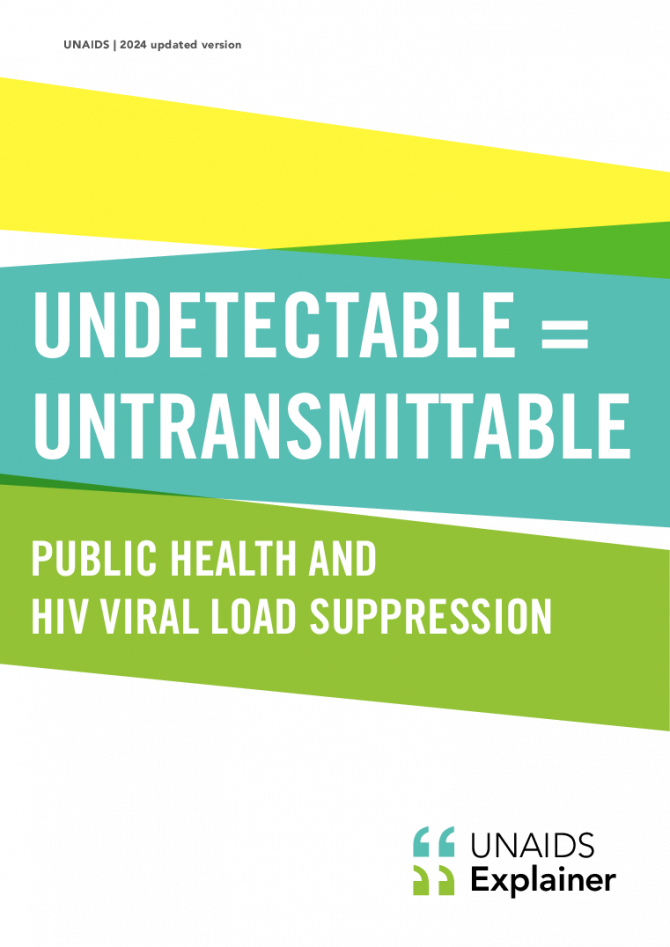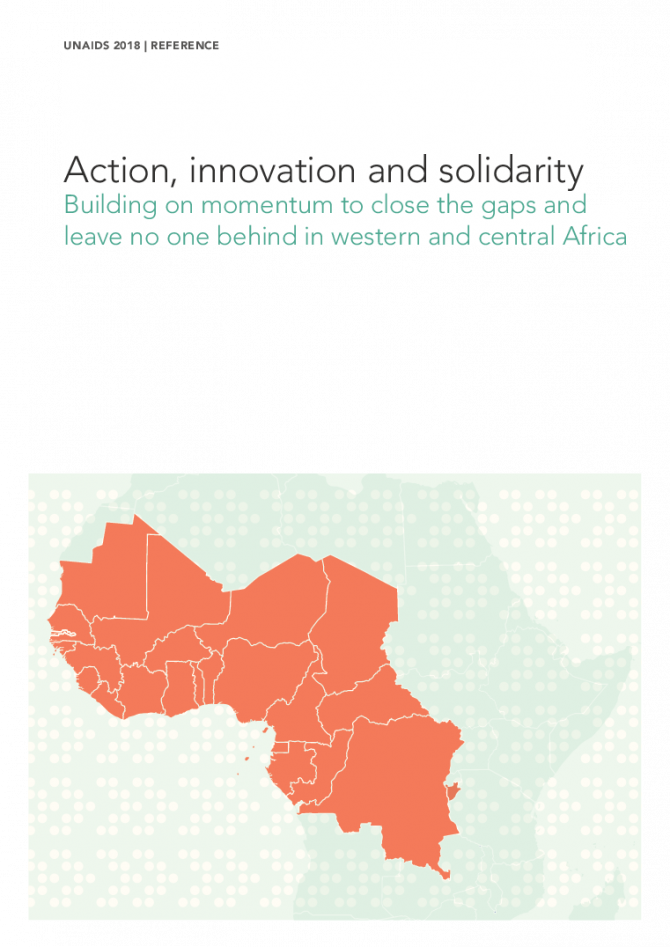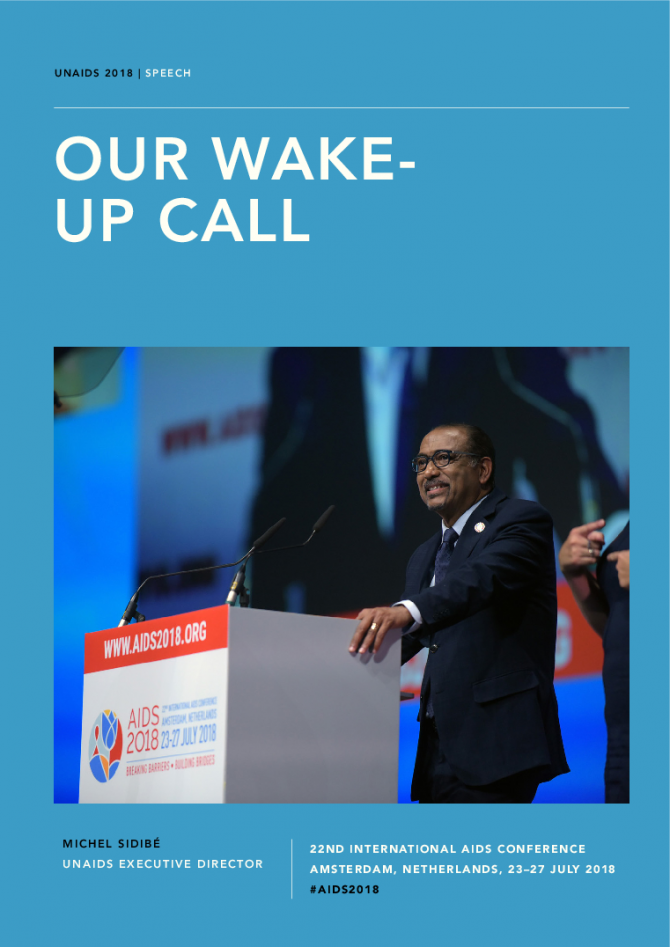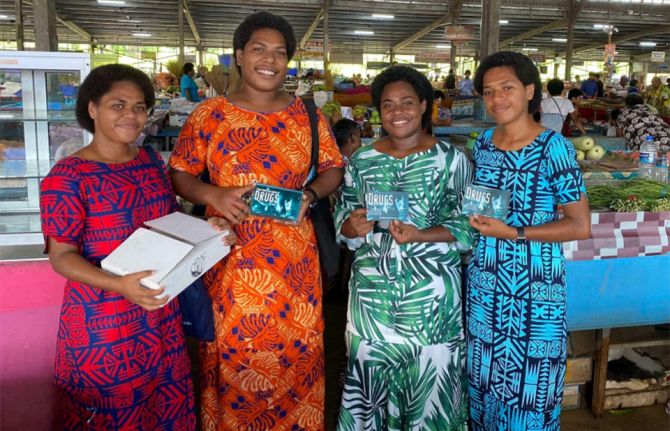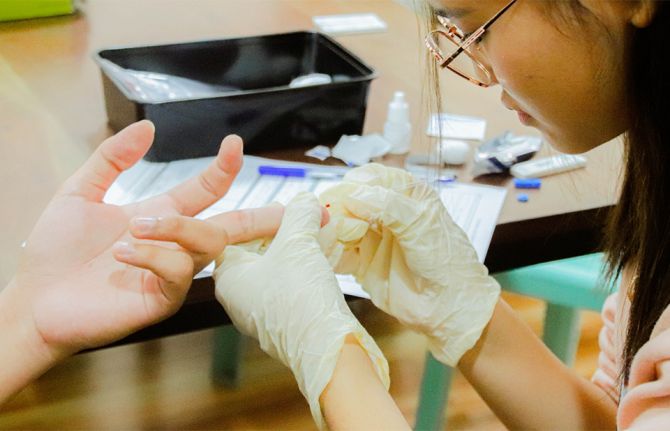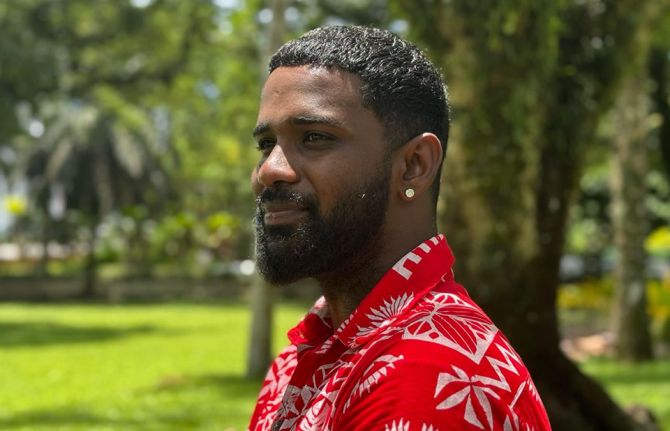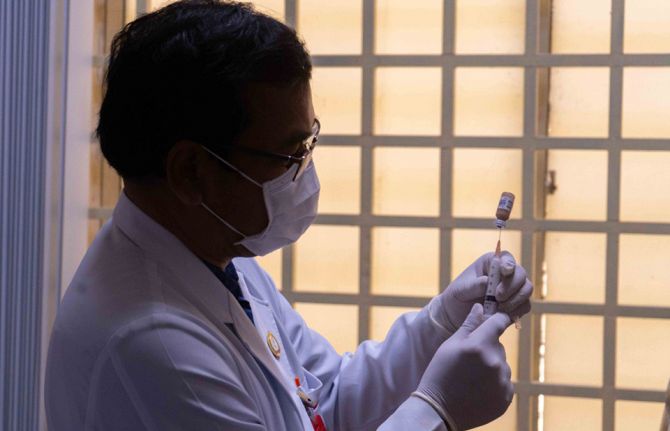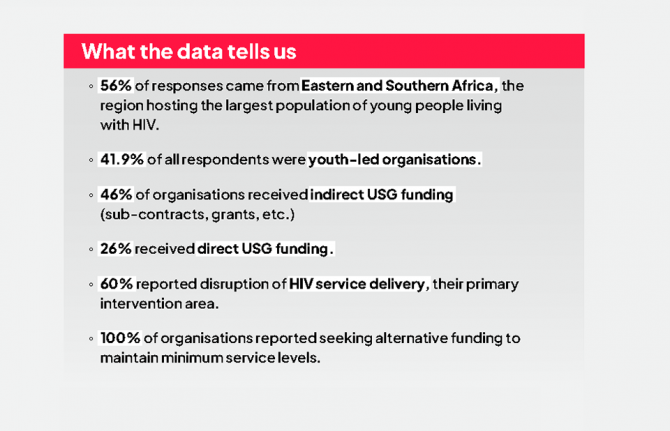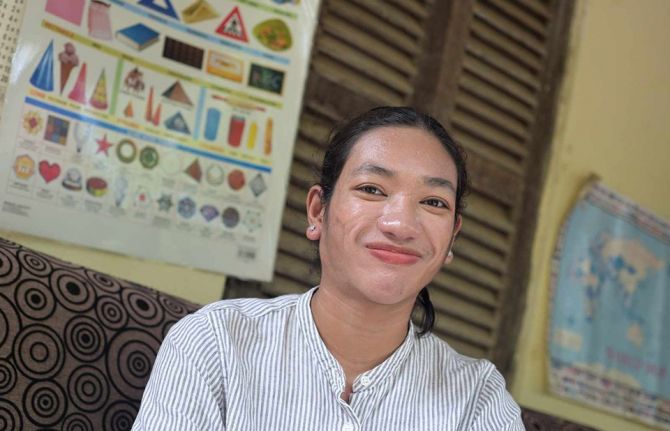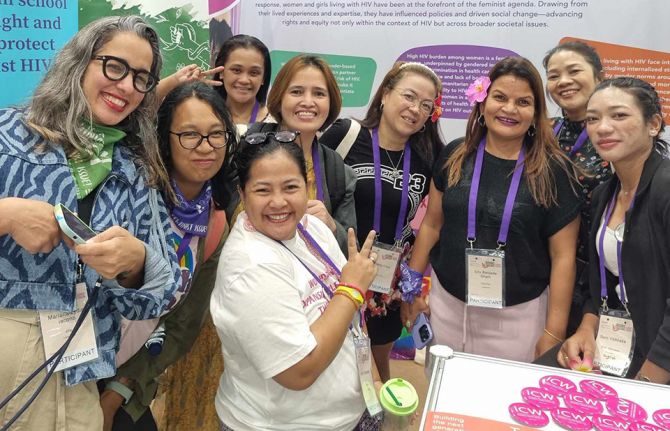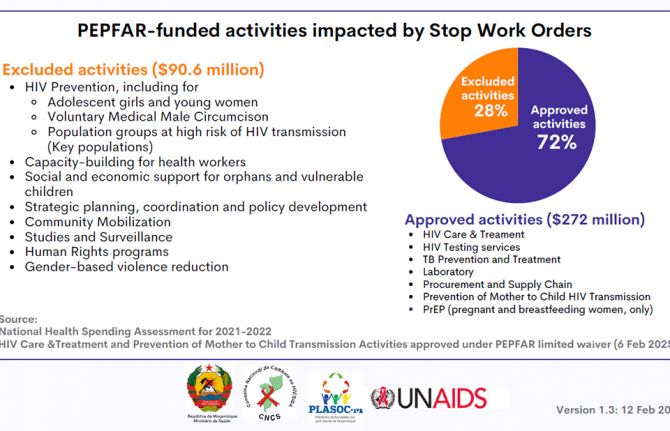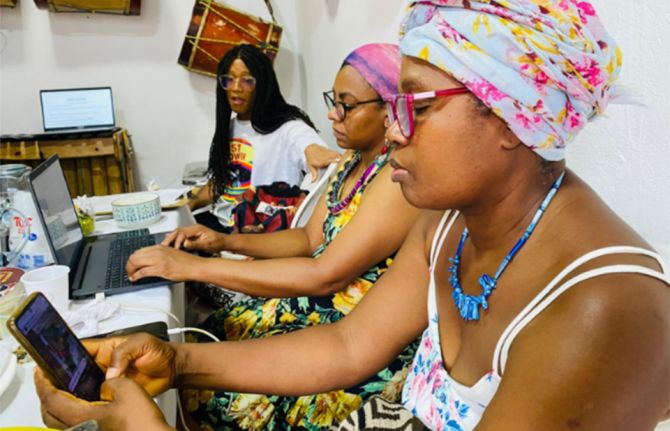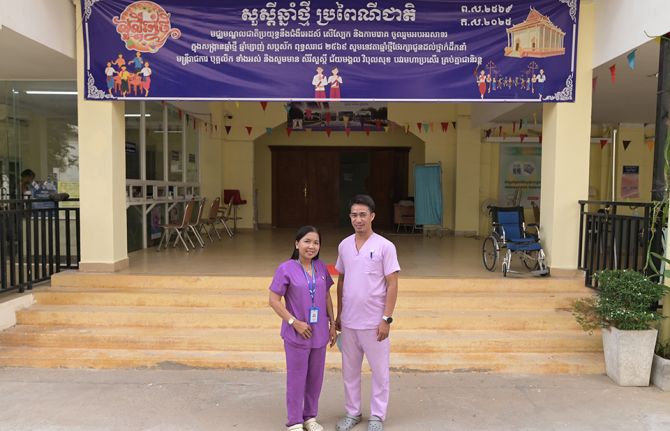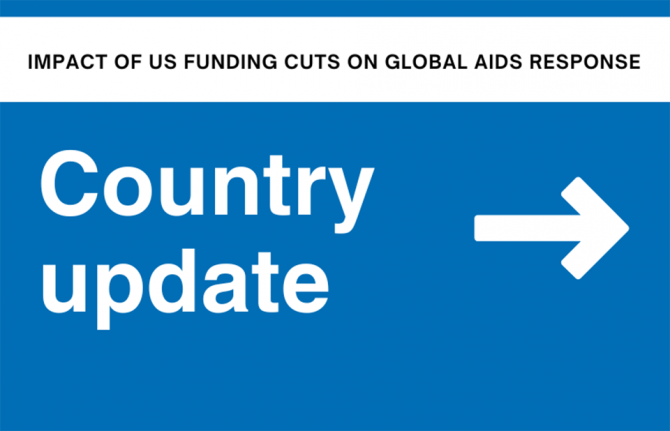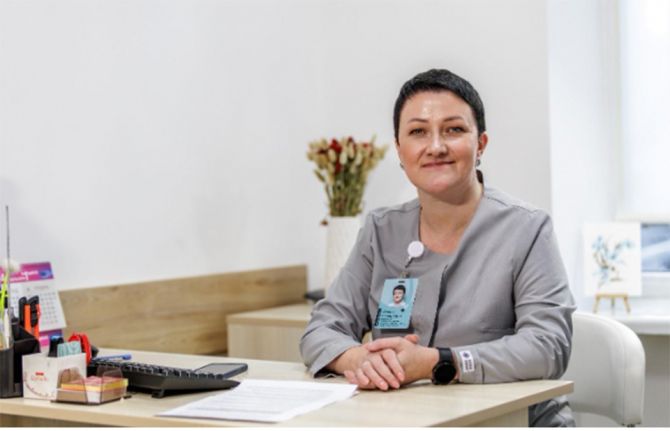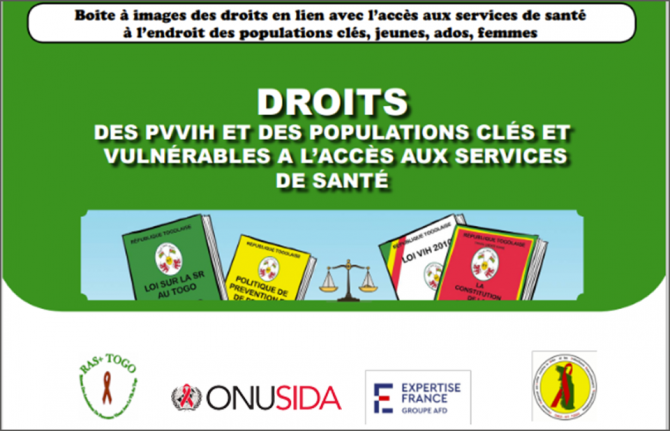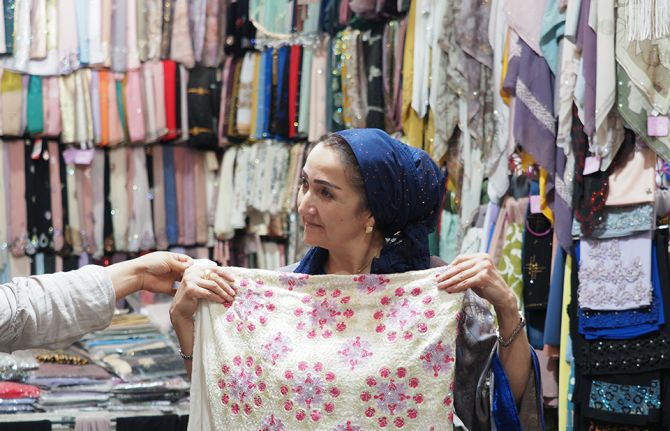Documents
Undetectable = untransmittable — Public health and HIV viral load suppression
22 March 2024
For many people living with HIV, the news that they have zero or almost zero risk of transmitting HIV sexually is life-changing. Access to effective antiretroviral therapy and the resulting viral suppression, with support from the community and the health system, can be transformative for people living with HIV, who are enabled to regain their quality of life, return to work, enjoy a healthy sexual life, have healthy children, and enjoy a future with hope.

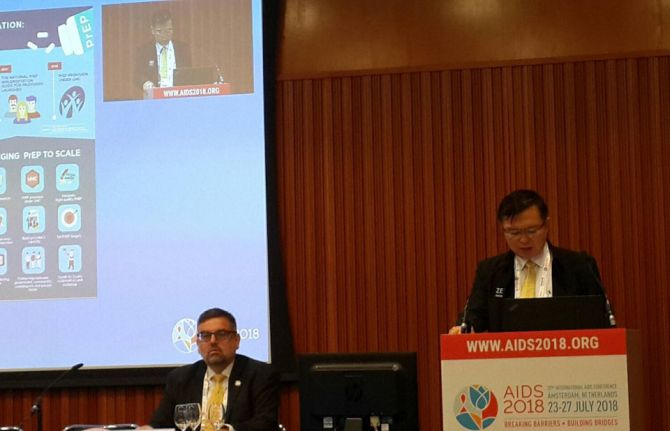

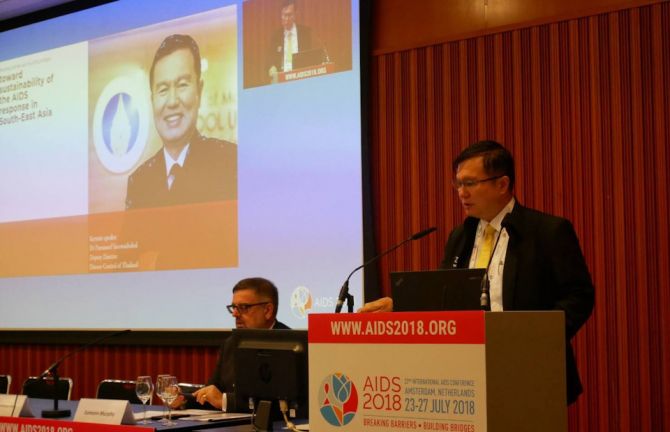
Feature Story
Thailand brings PrEP to scale
01 August 2018
01 August 2018 01 August 2018Thailand is starting to roll out pre-exposure prophylaxis (PrEP) for HIV prevention among key higher-risk groups in high burden provinces, scaling up PrEP pilot projects within the national health system. The announcement was made at the satellite session “Breaking barriers and building bridges toward sustainability of the AIDS response in South-East Asia” during the International AIDS Conference in Amsterdam, Netherlands.
At the session, Dr Panumard Yarnwaidsakul, Deputy Director-General of the Department of Disease Control, Ministry of Public Health, said that the country is moving from trials and demonstration projects to policy and practice. PrEP now is a core part of the combination prevention package in the national HIV response in the country. Mr Yarnwaidsakul added that Thailand is also in process of including PrEP provision as part of the benefits package under the country’s universal health coverage.
As with many countries in Asia and the Pacific, Thailand's epidemic is focused among gay men and other men who have sex with men, transgender people and people who use drugs. The representatives of the Thai government acknowledged that PrEP is cost-effective and is an innovative approach for people at substantial risk of HIV infection.
Randomized trials have demonstrated that PrEP can decrease HIV incidence among at-risk populations, including men who have sex with men and sero-discordant couples. It has been shown that offering PrEP can encourage more people at higher risk to attend HIV clinics, undergo HIV testing and access either PrEP or treatment depending on the test result.
In Thailand, the discussion about offering PrEP at scale started in 2010.
The satellite session learned from "The Princess PrEP", a successful key population-led PrEP initiative under the support of Her Royal Highness Princess Soamsawali and PEPFAR/ USAID LINKAGES Thailand project.This effort served as local evidence to support the development of PrEP roll-out, where key population-led health services are a critical component.
As a next step, the Ministry of Public Health aims to train health care workers and key population peer providers to deliver PrEP.
Quotes
“We hope that other countries can learn from Thailand so that they can move faster. Don’t wait too long. Delayed roll-out of PrEP means more new HIV infections and slower progress to ending AIDS.”
"Thailand’s move comes at a critical time to revamp HIV prevention efforts in Asia and the Pacific. The Thai experience and evidence invigorate the HIV response and teach and inspire other countries to move quickly to introduce PrEP and move away from small scale pilots."
Region/country

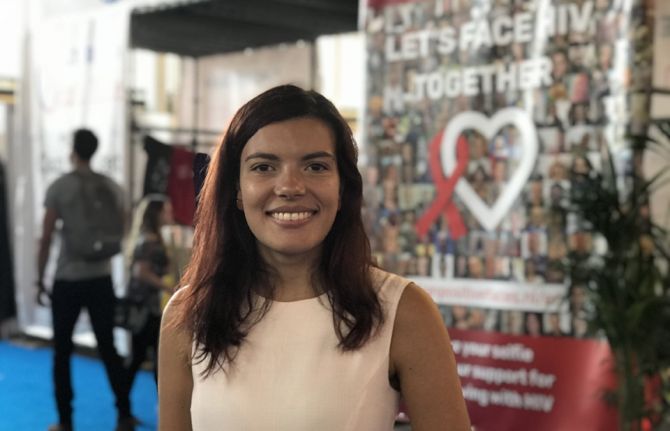
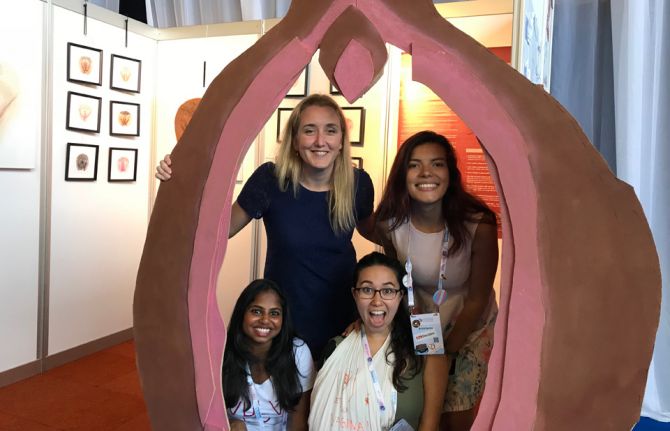
Feature Story
'Nothing for us, without us,' hammer young people at AIDS Conference
31 July 2018
31 July 2018 31 July 2018Sitting on center stage, clutching a microphone, Chinmay Modi along with a dozen young people answered questions about HIV during an all-youth panel session at the Amsterdam 2018 AIDS conference.
The 25-year-old born with HIV described his struggle accessing services. "In India, sex is a big taboo. A 16-year-old cannot buy condoms for example and parents need to give consent to be tested for HIV." He said educating children and parents is key. His greatest desire involves pushing for specific youth-focused services.
Dany Stolbunov from Ukraine echoed that sentiment, saying "Nothing for us, without us." He said that in his region stigma and discrimination kept people from even accessing services. He bemoaned the fact that young people in Ukraine have limited information and are not seen as a priority.
HIV FACTS
In 2017, there were approximately 250 000 new HIV infections and 38 000 AIDS-related deaths among adolescents and 1.8 million adolescents living with HIV globally.
Adolescent girls in sub-Saharan Africa are disproportionately affected by new HIV infections, making up 56% of new HIV infections among adolescents globally.
HIV is a leading cause of death among adolescents (10-19 years).
"We are ready to fight for our rights," he added, explaining that young people have a voice and want to use it.
Bruna Martinez strongly believes that broad sexual education discussing gender, health issues and pleasure would not only limit stigma, it would also make teenagers fear HIV less.
"HIV should not be in a vacuum," she said. "We are a generation that can discuss sex and that's a great thing; so give us the tools that tip things in our favor."
All agreed that teenagers and young people have the most at stake in ending the HIV epidemic. Their demand is clear: go beyond scholarships by empowering us.
Melodi Tamarzians, the Dutch youth ambassador for sexual and reproductive health and rights, said, "Do not tick the youth box by giving us a token position." In her view, to enable young people, adults need to invest in them and give them advisory roles.
AIDS 2018 prided itself on giving a greater space to young people in Amsterdam. Youth and junior investigators made up more than one-third of the submissions presented at the conference, according to the conference organizer, the International AIDS Society (IAS.) In addition, young people got the most scholarships than at any other conference. And the Global Village (a free admission space by the conference area) featured the largest space conceived of and run by young people. It included a snack area, a mini-indoor football field, a safe-space theater area and youth-led activities, and booths such as a radio recording area, a youth against AIDS t-shirt stand and even an exhibit about the vagina.
Ms Martinez volunteered and then worked with the Amsterdam Youth Force that mobilized and organized other young people to make the youth space their own. "At this conference, we showed everybody that we could deliver," she said.
She hopes that this meaningful youth presence will carry over. "It's important that we are not being catered to but rather that we are recognized," she said, her AIDS 2018 lanyard laden with pins and stickers. She sees her recent stint with the Youth Force as a way to change things. "There are still so many young people getting infected with HIV and dying. It means we are failing and the system is not working," Ms Martinez said. In her view, HIV policy has to also come from the ground upwards. She emphasized peer-to-peer education and valuing local knowledge. Standing in front of a huge 'Let's face HIV together' she said, "We speak the language of the young people and we know what we are living, so acknowledge us fully."
The Youth Booth at the Global Village in Amsterdam
Related

Feature Story
We can no longer ignore girls who become brides
26 July 2018
26 July 2018 26 July 2018Worldwide every year, 12 million girls under the age of 18 years are married—that's equivalent to 23 girls every minute. Married too soon. Their personal growth, health and fundamental rights and freedoms denied. Gender inequalities and gender-based violence force thousands of girls into marriage and motherhood. Girls with no education are three times as likely to marry by the age of 18 years as those with a secondary or higher education. And girls who marry before they are 15 years old are 50% more likely to face physical or sexual violence from a partner.
Child marriage often means that girls find it difficult to negotiate safer sex with their husbands, who are commonly older and more sexually experienced, making the girls especially vulnerable to HIV and other sexually transmitted infections.
UNAIDS’ latest report, Miles to go, highlights the reality that adolescent girls and young women aged 15–24 years, particularly those from sub-Saharan Africa, are being left behind. Every week, more than 6600 adolescent girls and young women become newly infected with HIV, with sub-Saharan African women and girls bearing the brunt, accounting for one in four HIV infections in 2017 despite being just 10% of the population.
Girls Not Brides, the Global Fund to Fight AIDS, Tuberculosis and Malaria, the Ministry of Foreign Affairs of the Netherlands and UNAIDS hosted a panel discussion on the issue of child marriage at the International AIDS Conference in Amsterdam, Netherlands, bringing together panellists from across regions, sectors and generations. Monica Geingos, the First Lady of Namibia, was a special guest speaker.
When girls and women are empowered with rights and given equitable access to education, enabled to participate fully in the labour force and equitably represented in government and decision-making bodies, the benefits far outreach improving the lives of the individual woman. Their families, communities and countries thrive. Yet, more than 150 million girls will become child brides by 2030.
The panellists highlighted the need to tackle the underlining determinants behind both HIV and child marriage. They emphasized the need for a comprehensive multisectoral and resourced approach. Gender inequality and harmful social norms have to be challenged. The solutions, they said, include keeping girls in school, providing health services that serve young people’s needs and mobilizing families and communities, including men and boys.
Quotes
“A lot of times it's about economic survival, so for there to be collective progress, we will not go anywhere without structural changes.”
“Invest in youth and enable us by empowering us with decision-making roles.”
“You can’t just take packaged programmes into communities. You need to spend the time to get to know people and work with them to figure out how to tailor these programmes.”
“It is sad that a lot of the responses to HIV are still heavily biomedical. Prevention is underresourced, particularly concerning structural issues, such as child marriage, which are harder to programme around and demonstrate impact.”
“We can no longer ignore these girls, which is why I am delighted we are having the difficult conversations we need to have, and finding solutions.”

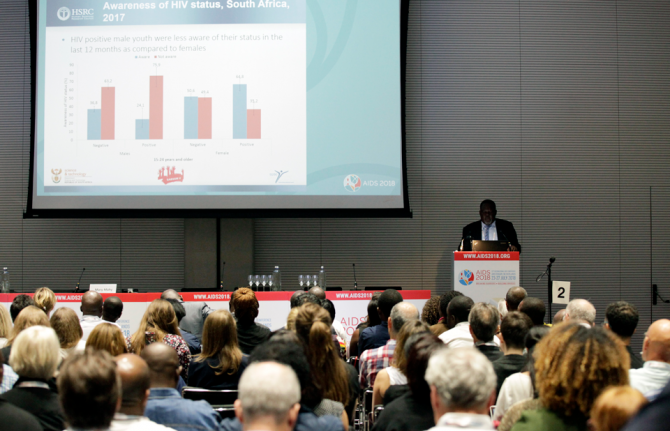
Press Statement
UNAIDS welcomes additional evidence from Cameroon, Côte d’Ivoire, and South Africa on progress towards the 2020 targets
22 July 2018 22 July 2018Results from population-based HIV impact surveys provide insight into where investments are needed
AMSTERDAM/GENEVA, 22 July 2018—Cameroon, Côte d’Ivoire, and South Africa have released new survey data on progress towards the 2020 targets. The Cameroon and Côte d’Ivoire population-based HIV impact assessment (PHIA) surveys and the South African survey all studied knowledge of HIV status, new HIV infections, condom use, voluntary medical male circumcision, antiretroviral therapy coverage, viral suppression and other indicators.
In South Africa, which has the largest HIV epidemic in the world with more than 7 million people living with HIV and the largest treatment programme in the world with 4.4 million people on antiretroviral therapy, the new data combined with similar data from an earlier survey indicate that there has been a 40% reduction in the rate of new adult HIV infections between 2010 and 2017.
“These surveys are incredibly important and play a vital role in helping countries to review and refine their HIV programming to make sure that the right services are reaching people affected by HIV,” said Michel Sidibé Executive Director of UNAIDS.
The survey data confirm UNAIDS estimates which indicate that South Africa has also improved treatment coverage and is very close to reaching the 90-90-90* treatment targets. It found that 85% of people living with HIV knew their HIV status, 71% of people who knew their status were accessing antiretroviral treatment and 86% of people who were accessing treatment had supressed viral loads.
Viral load suppression among all people living with HIV in Cameroon and Côte d’Ivoire however was less than 50% reflecting low treatment coverage. The two countries are far from reaching the 90-90-90 targets at 47%, 91% and 80% and 37%, 88% and 76% respectively.
The largest difference between the southern African country and the two western and central African countries is observed in knowledge of HIV status, indicating that HIV testing services need to be significantly scaled up in west and central Africa.
The PHIA surveys provide key information for identifying characteristics of the populations that are not receiving services. In Cameroon, viral load suppression varied by province from 28% to 63%. In South Africa less than 50% of children and young men (ages 15-34 years) living with HIV had suppressed viral load (compared to 67% among the women aged 15-49). These data will provide critical information to allow programme managers to direct their responses to the populations and locations most in need of services.
The PHIA surveys, were led by Columbia University in collaboration with country governments and supported by the United States President’s Emergency Plan for AIDS Relief. The South African survey was conducted by the Human Sciences Research Council
* 90% of people living with HIV know their HIV status, 90% of people who know their status are receiving antiretroviral treatment, and 90% of people on treatment have suppressed viral loads.
UNAIDS
The Joint United Nations Programme on HIV/AIDS (UNAIDS) leads and inspires the world to achieve its shared vision of zero new HIV infections, zero discrimination and zero AIDS-related deaths. UNAIDS unites the efforts of 11 UN organizations—UNHCR, UNICEF, WFP, UNDP, UNFPA, UNODC, UN Women, ILO, UNESCO, WHO and the World Bank—and works closely with global and national partners towards ending the AIDS epidemic by 2030 as part of the Sustainable Development Goals. Learn more at unaids.org and connect with us on Facebook, Twitter, Instagram and YouTube.
Press centre
Download the printable version (PDF)
Region/country

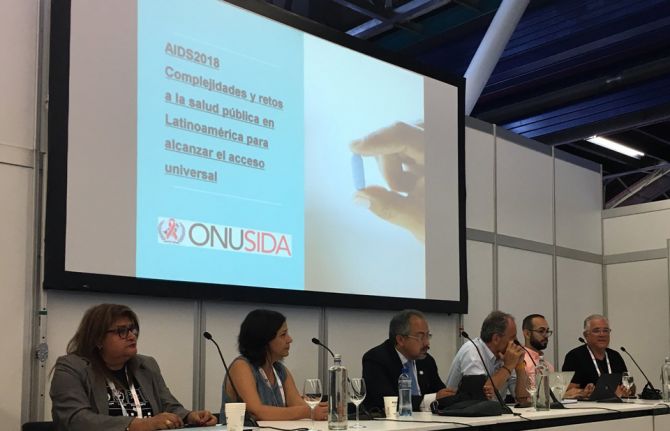
Feature Story
Sustaining the HIV response in Latin America
26 July 2018
26 July 2018 26 July 2018Antiretroviral stock-outs are a serious public health problem in the Latin America region and represent an important risk to the sustainability of the HIV response, according to participants at AIDS2018.
On July 26, a session titled Sustainability of the response to HIV in Latin America; factors that impact access to drugs and health supplies addressed and analyzed the magnitude, the structural causes and the impact of stock-outs on the sustainability of the HIV response in Latin America. Participants discussed strategies to pave the way forward and highlighted best practices on joint purchases of antiretroviral (ARV) treatment like the PAHO/OMS strategic fund, which has helped prevent stock-outs.
In Latin America, one of the most important achievements in the HIV response has been the recognition that accessing HIV treatment is part of the right to health in the public health system, resulting in an increased number of people receiving antiretroviral treatment in recent years. However, a major challenge to fulfill the right to health is to guarantee uninterrupted supplies of ARV drugs and other essential health commodities.
According to the Pan American Health Organization (PAHO), in 2012 45% of the countries reported at least one stock-out episode; the figure had been 54% in 2010. Although some improvements are seen from 2010 to 2012, the region is still experiencing a high frequency of stock-outs.
Shortages of ARVs and other essential supplies result in changes and interruptions in patient treatment, threaten the lives of people with HIV and hamper the reduction of new HIV infections and AIDS-related deaths.
Participants at the session stressed the need for greater health system strengthening and joint procurement processes, including the incorporation of TRIPS flexibilities to reduce ARV costs, aligned with policies for simplified treatment regimens. According to participants, all these factors are essential to prevent and respond to stock-outs of ARVs and medical supplies.
Quotes
“Situations of stock affect the adherence to treatment, and consequently increases morbidity and mortality through opportunistic infections/diseases. It is fundamental and urgent the increase of public financing to increase the budget for prevention and treatment. The purchase mechanisms should be efficient and timely”
“Latin America continues to be the region with the highest coverage rate of antiretroviral treatment. About 1.1 million people in the region were accessing treatment in 2017, which represents 61% of people living with HIV. To close the gaps, it is key to Improve the management of national programs and planning so there are no stock-outs of medication.”
“Policies on access to generic medicines continue to be one of the key strategies for improving access to medicines, together with the strengthening of systems for the management and use of regional drug procurement mechanisms, including the PAHO Strategic Fund.”
"70% of countries have been or have been at risk of interruptions in delivery of drugs and / or supplies in the past 2 years. The main identified causes were related to the management of supplies "
“Civil society has been playing a key role in the monitoring and auditing public management and procurement in order to ensure universal access to health. And we can improve this work by using several tools that are available in different countries of our region such as the law that guarantees access to public information, follow-up of public procurement (including e-procurement) and open parliament.“

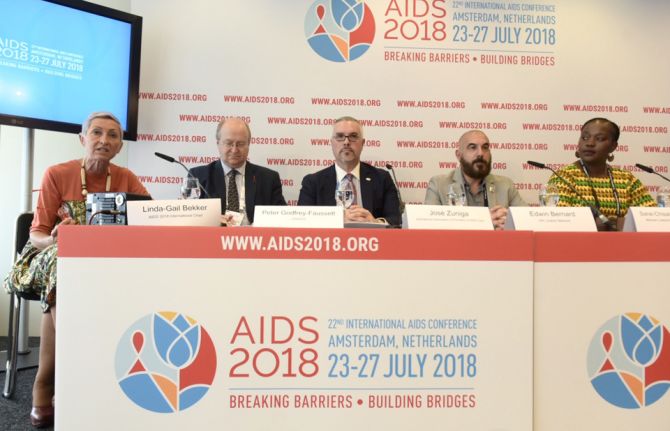
Press Release
Leading experts call on the criminal justice system to ensure science informs the application of the law in criminal cases related to HIV
25 July 2018 25 July 2018Prosecutions of people living with HIV for acts that pose no risk of HIV exposure or transmission prompt scientists to issue a statement urging the criminal justice system to use science when considering prosecution of HIV non-disclosure, exposure or transmission
AMSTERDAM/GENEVA, 25 July 2018—A group of 20 leading HIV scientists from around the world have issued a scientific consensus statement urging governments and people working in the legal and justice systems to pay close attention to the significant advances in HIV science to ensure that science informs the application of criminal law in cases related to HIV.
“Science has greatly advanced in recent years which has been critical in allowing countries to make evidence informed decisions in their HIV programming,” said Michel Sidibé, Executive Director of UNAIDS. “With all the new scientific advances now available we need to continue to use science as evidence to deliver justice. No one should face criminalization because of a lack of information or understanding by the justice system about the risks of HIV transmission.”
The expert group of scientists, convened by UNAIDS, the International Association of Providers of AIDS Care (IAPAC) and the International AIDS Society, warn that an overly broad and inappropriate application of criminal law against people living with HIV remains a serious concern across the globe. Around 73 countries have laws that criminalize HIV non-disclosure, exposure or transmission, and 39 countries have applied other criminal law provisions in similar cases.
“Many of these laws do not take into account measures that reduce HIV transmissibility, including condom use, and were enacted well before the preventive benefit of antiretroviral therapy or pre-exposure prophylaxis was fully characterized,” said José M. Zuniga, IAPAC President and Chief Executive Officer. “Most people living with HIV who know their status take steps to prevent transmitting HIV to others. Laws that specifically criminalize HIV non-disclosure, exposure, or transmission thus primarily exacerbate HIV-related stigma and decrease HIV service uptake.”
Most prosecutions have occurred based on perceived risk of HIV transmission through sexual activity. Some have also occurred for biting, spitting or even scratching. Prosecutions, and convictions, have often been influenced by a lack of knowledge or appreciation of scientific evidence regarding the possibility of transmission of the virus. In many instances, they have been influenced by deep-rooted stigma and fear associated with HIV, which still exists despite the huge advances in HIV treatment and prevention.
“We support this globally relevant expert consensus statement, for which we have been long-time advocates,” said HIV Justice Network’s Senior Policy Analyst Sally Cameron, on behalf of the Steering Committee of HIV Justice Worldwide, a global civil society coalition campaigning to end unjust prosecutions. “HIV criminalization is a growing global phenomenon that unfairly targets people living with HIV through criminal prosecutions and harsh penalties. This welcome statement makes the case that our current understanding of HIV science, alongside key human rights and legal principles, does not support this miscarriage of justice.”
The peer-reviewed consensus statement, endorsed by 70 additional scientists from around the world, was released today in the Journal of the International AIDS Society. It describes scientific evidence on the possibility of HIV transmission under various circumstances, the long-term impact of HIV infection and the means of proving HIV transmission so that it is better understood in criminal law contexts.
Based on a detailed analysis of the best available scientific evidence on HIV transmission and treatment effectiveness, the statement notes that there is no possibility of HIV transmission through saliva as a result of biting or spitting, even where saliva contains small quantities of blood. There is no to negligible possibility of HIV transmission where a condom is used correctly during sex, or where a partner living with HIV has an undetectable viral load.
In addition, effective antiretroviral therapy, low viral load, the use of pre-exposure prophylaxis (antiretroviral drugs taken by an HIV-negative person before a possible exposure), or post-exposure prophylaxis (antiretroviral medicines taken after a possible exposure) all significantly reduce the possibility of HIV transmission.
International guidance on HIV in the context of the criminal law recommends that “proof of causation, in relation to HIV transmission, should always be based on evidence derived from a number of relevant sources, including medical records, rigorous scientific methods and sexual history” (Ending overly broad criminalization of HIV non-disclosure, exposure and transmission: critical scientific, medical and legal considerations).
The experts recommend strongly that more caution be exercised when considering criminal prosecution, including careful appraisal of current scientific evidence on HIV risk and harms. The consensus statement is expected to help policymakers, prosecutors and courts be guided by the best available science and thereby avoid the misuse of the criminal law, as is currently happening in many countries worldwide.
Read the full Expert Consensus Statement on the Science of HIV in the Context of Criminal Law
UNAIDS
The Joint United Nations Programme on HIV/AIDS (UNAIDS) leads and inspires the world to achieve its shared vision of zero new HIV infections, zero discrimination and zero AIDS-related deaths. UNAIDS unites the efforts of 11 UN organizations—UNHCR, UNICEF, WFP, UNDP, UNFPA, UNODC, UN Women, ILO, UNESCO, WHO and the World Bank—and works closely with global and national partners towards ending the AIDS epidemic by 2030 as part of the Sustainable Development Goals. Learn more at unaids.org and connect with us on Facebook, Twitter, Instagram and YouTube.
Press centre
Download the printable version (PDF)

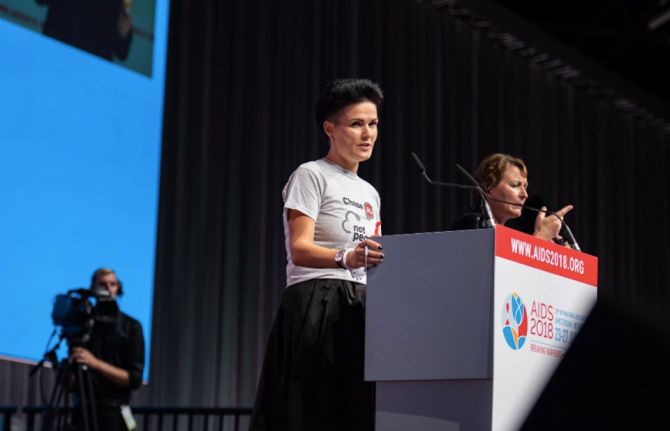

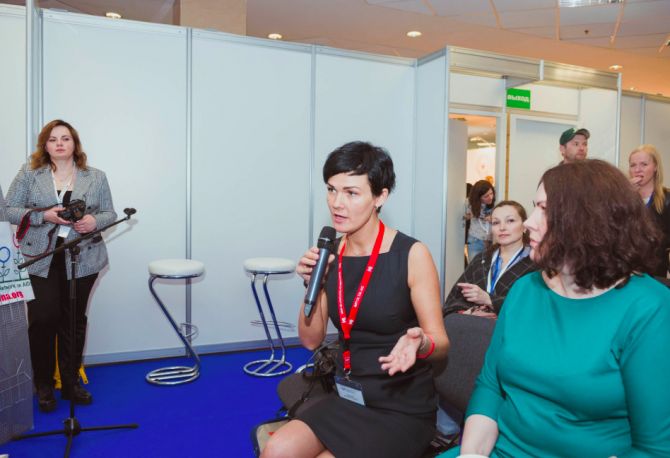
Feature Story
Defending the rights of people living with HIV at community level in the Russian Federation
27 July 2018
27 July 2018 27 July 2018Maria Godlevskaya, a courageous community activist living with HIV from the Eastern Europe and Central Asia region, was the only Russian language speaker at the opening of the 22nd International AIDS Conference, AIDS2018.
"We all deserve high-quality treatment, regardless of sexual orientation, beliefs and religious preferences. We all deserve a quality life with HIV and without it. For many people, stigma and discrimination remain the main barriers to access support to preserve their health and the health of their loved ones." said Maria Godlevskaya in her opening remarks at AIDS2018. "I believe in the community. As an indestructible link in the chain of resistance, I have defended, defend and will defend the rights of people living with HIV to have full quality of life and a high standard of living. I encourage everyone to support our campaign "Chase the virus, not people!" #chasethevirusnotpeople
Maria has been living with HIV for over 18 years. She openly speaks about her HIV status on television and openly shares her personal story with journalists. Maria leads a team of peer counselors and runs a video blog at E.V.A. - the first Russian network to support women affected by HIV. She shares her personal experience and disseminates the latest HIV news and information with people affected by the epidemic across Russia every day.
"Some people call me and others reach out to me via social media. I try to respond to every request. I think my life has changed dramatically and now I have found my purpose in life. It is priceless to be able to communicate with people around the world.”
Maria was diagnosed with HIV when she was 16 years old. "When you are 16, there is no panic. You are not frightened by horror stories about AIDS and not bound by social rules, so it was not hard for me to accept my HIV diagnosis. I was more worried about my mother. My diagnosis was like litmus paper - people who were afraid of HIV abandoned me, but the most trusted ones have remained forever.”
Maria has been working for different HIV organizations for many years, starting with providing counselling for people who were using drugs and living with HIV. "At that time there were no well developed communities to support people who use drugs. We helped those in remission to start treatment and stay adherent to treatment."
A few years ago, Maria became pregnant and gave a birth to a healthy baby. "When I met the father of my child, I immediately told him about my "peculiarity” and left him to choose to stay with me. And he gave me a beautiful answer: ‘Every person has something special’ he said. So we stayed together, and he remained HIV negative.”
I stayed on HIV treatment throughout and after my pregnancy, and I was lucky to have a great relationship with my doctor. My pregnancy and birth is now an example for other women living with HIV. Today I get lots of questions from young Russian women about pregnancy, health care, obstetrical care for women with HIV, so I can share with them my positive experience.”
Maria’s organization, E.V.A. implements many projects in Saint Petersburg and across Russia, focused on providing HIV services for women and their families: support groups for women living with HIV and their families; trainings to increase medical literacy among people living with HIV, and help for women to communicate and negotiate with their doctors and care givers.
"Our trainings help women to adhere to treatment, minimize side effects, and manage undesirable consequences. We empower women to enhance their physical condition as they get used to taking ART long-term. We also support peer consellors so they can provide other women with moral and psychological support.”
Maria considers the main challenge of the growing HIV epidemic among women in Russia is that women have received little sexual education, lack a culture of safe and equal sexual relations and experience irregular monitoring of their HIV status. Many women simply do not identify themselves with any key population, and consider that having one regular sexual partner will safeguard their health.
"Now we are seeing so many new HIV infections among women over the age of 50 - which brings new challenges as how to support these women. When a woman in her thirties learns her HIV positive status, she may understand how she acquired it. But women in their fifties or sixties are often shocked to learn they have HIV and they often think that their lives are over. In such cases, peer counsellors are so important because they can answer practical questions from their own personal experience.”
“I have a clear set of goals: I know why I'm doing what I do, and I have the energy and strength. I try to set real goals and don’t try to save the whole world – I’m just supporting those who really need help.”
Region/country
- Eastern Europe and Central Asia
- Albania
- Armenia
- Azerbaijan
- Belarus
- Bosnia and Herzegovina
- Bulgaria
- Croatia
- Cyprus
- Czechia
- Estonia
- Georgia
- Hungary
- Kazakhstan
- Kyrgyzstan
- Latvia
- Lithuania
- Montenegro
- Poland
- Republic of Moldova
- Romania
- Russian Federation
- Serbia
- Slovakia
- Slovenia
- Tajikistan
- North Macedonia
- Türkiye
- Turkmenistan
- Ukraine
- Uzbekistan

